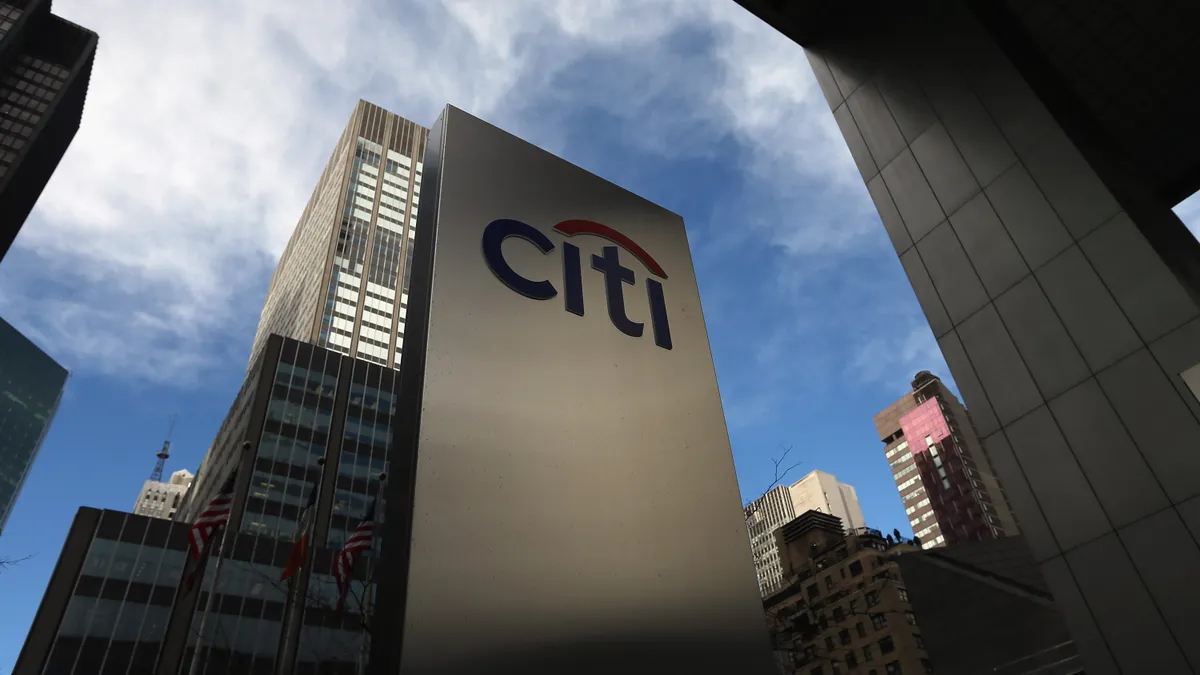Dive Brief:
- A federal judge Monday dismissed the case between Citi and creditors of makeup giant Revlon.
- The 10 creditors that had previously refused to return a collective $504 million from an errant August 2020 payment, which Citi made on Revlon’s behalf, have settled with the bank, according to a letter filed Friday in the U.S. District Court for the Southern District of New York.
- However, U.S. District Judge Jesse Furman, in his order Monday, gave the parties 60 days to reopen legal action “if the settlement is not consummated,” according to Bloomberg.
Dive Insight:
The dismissal closes an embarrassing chapter in Citi’s history.
“Any pending motions are moot,” Furman wrote Monday. “All conferences are canceled. The Clerk of the Court is directed to close the case.”
A hint came earlier this month that Citi and the creditors might settle. The parties told Furman on Dec. 5 that three of the creditors were prepared to sign an agreement to end the legal action, and added that “substantial progress” had been made in talks with the others, Bloomberg reported.
Roughly three-quarters of the payments, which Citi testified it wired by mistake, have been returned to the bank, according to Friday’s letter. The bank will return certain coupon interest and principal amortization amounts to lenders that have returned the mistaken payments, according to the settlement.
Citi CEO Jane Fraser has described the ordeal as a "massive, unforced error." The bank in August 2020 mistakenly transmitted $900 million to creditors on a 2016 Revlon loan, instead of the $7.8 million interest payment it intended to send. The larger amount represented a full payoff of a loan that wasn’t due until 2023.
Although some asset managers returned about $385 million of the funds, 10 refused, leading to a two-year legal battle.
Furman called Citi’s mistake “one of the biggest blunders in banking history,” and ruled in February 2021 that the 10 creditors — including Brigade Capital Management, HPS Investment Partners and Symphony Asset Management — were not required to return the money.
He cited precedent from a 1991 case in which New York’s highest court ruled that when a third party mistakenly sends money from a debtor to a creditor, the creditor can keep the payment if it didn’t realize it was sent in error and didn’t make any misrepresentations — a principle called discharge for value.
Citi’s battle to recoup the funds took a turn in the bank’s favor in September, when Furman’s ruling was vacated by the 2nd U.S. Circuit Court of Appeals.
The bank’s error, however, has not escaped the attention of regulators.
The Federal Reserve and Office of the Comptroller of the Currency (OCC) ordered Citi in October 2020 to improve its risk management, data and internal controls, and fined the bank $400 million — presumably in part because of the Revlon blunder.
The Fed and the Federal Deposit Insurance Corp. (FDIC) demanded last month that Citi address a shortcoming in its living will. The regulators gave the bank until Jan. 31 to submit a “mapping document” aimed at resolving weaknesses related to data quality and data management concerns previously identified in the October 2020 enforcement action.















